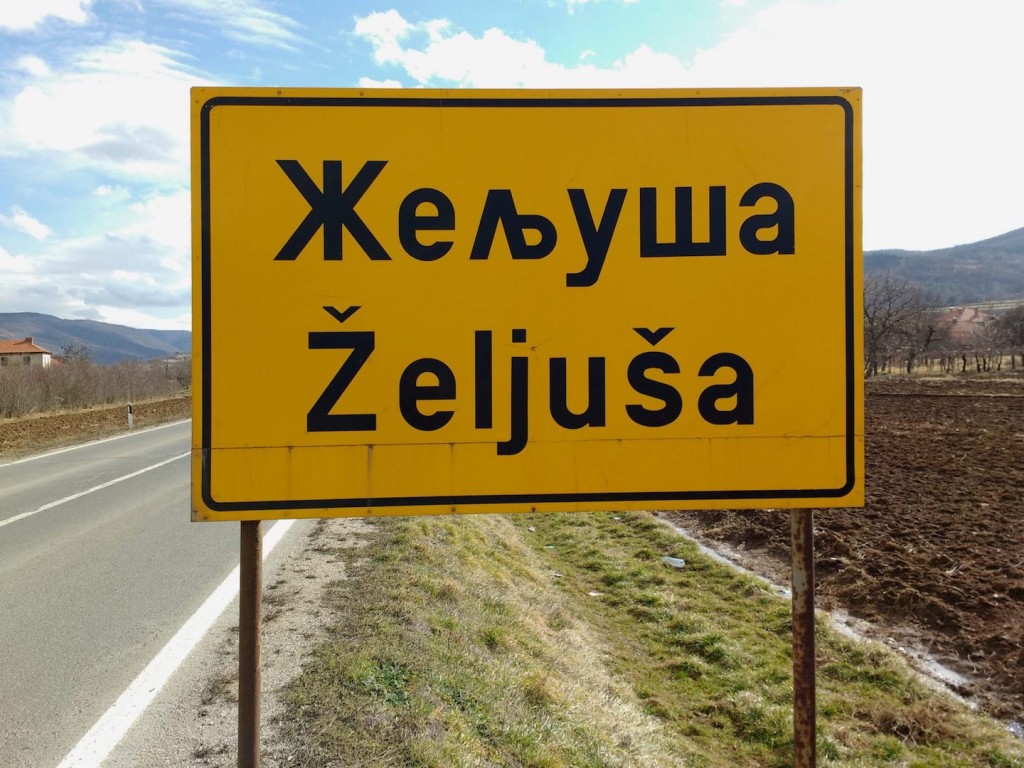Ligatures for “ль” and “нь” are unique to the Cyrillic alphabets of several Slavic languages in Southeastern Europe. We don’t have them in Bulgarian, so I can remember being confused the first time I saw them in Serbia. My confusion turned into fascination once I realized that their construction fused two characters that I knew how to use into one that we simply don’t have.
You can see љ (Lje) on this road sign for Жељуша in Serbia (with the Serbo-Croatian Latin representation below it):

It is a linguist by the name of Vuk Karadžić who created these ligatures during a major reformation of the Serbian language and alphabet during the early 1800s. Typographic ligatures themselves are an interesting concept dating back to the days of physical typesetting. The icing on the cake with these particular ligatures is their use of the beautifully subtle er maluk (ь) character, which is slightly rare in Bulgarian.
I have recently seen these ligatures in use in Macedonia as well, but after learning about Vuk’s reforms it seems appropriate that it was in Serbia where I first noticed them.
A Tale of Two Karadžićs
The Karadžić name became known worldwide after the wars of independence in the former Yugoslav republics during the 1990s. In a rather mind-blowing twist, it turns out that there are two well-known, directly related Karadžićs:
The first is, of course, the celebrated poet, ethnologist, and reformer of the Serbian language and writing system. The second is Radovan Karadžić, a Bosnian Serb who is now being tried for war crimes at the International Criminal Tribunal for the former Yugoslavia (ICTY). His indictment includes the alleged direct responsibility for the Srebrenica massacre.


